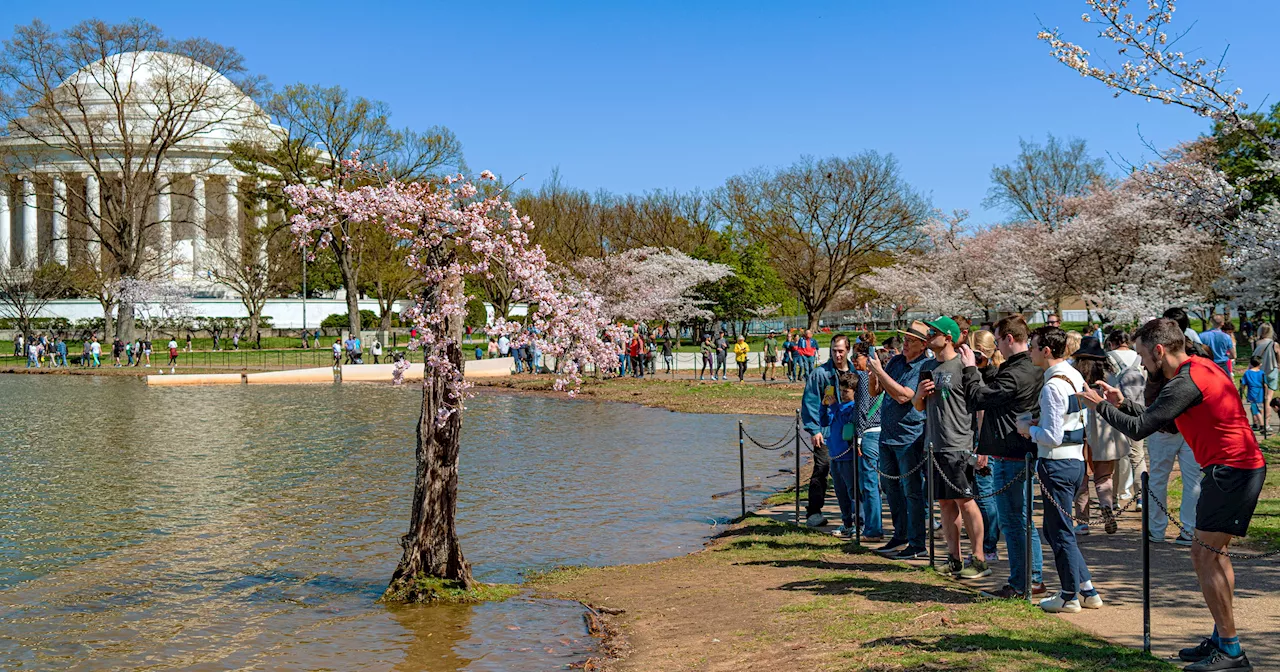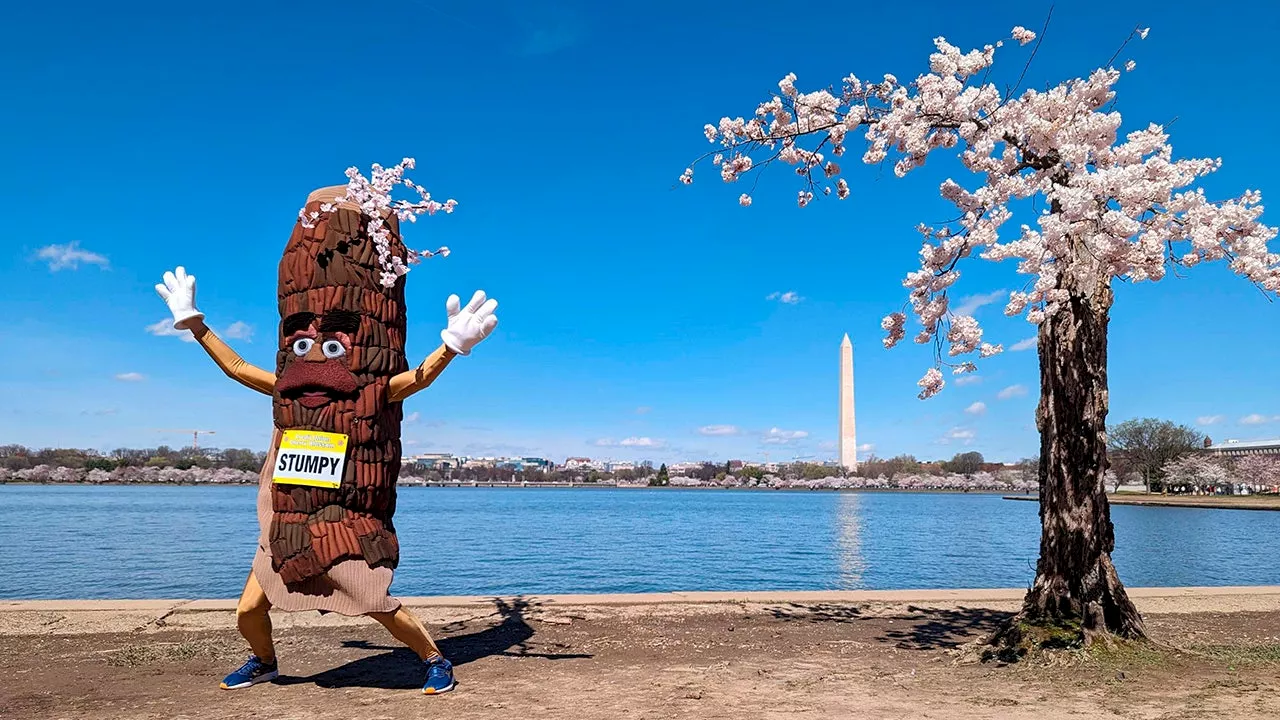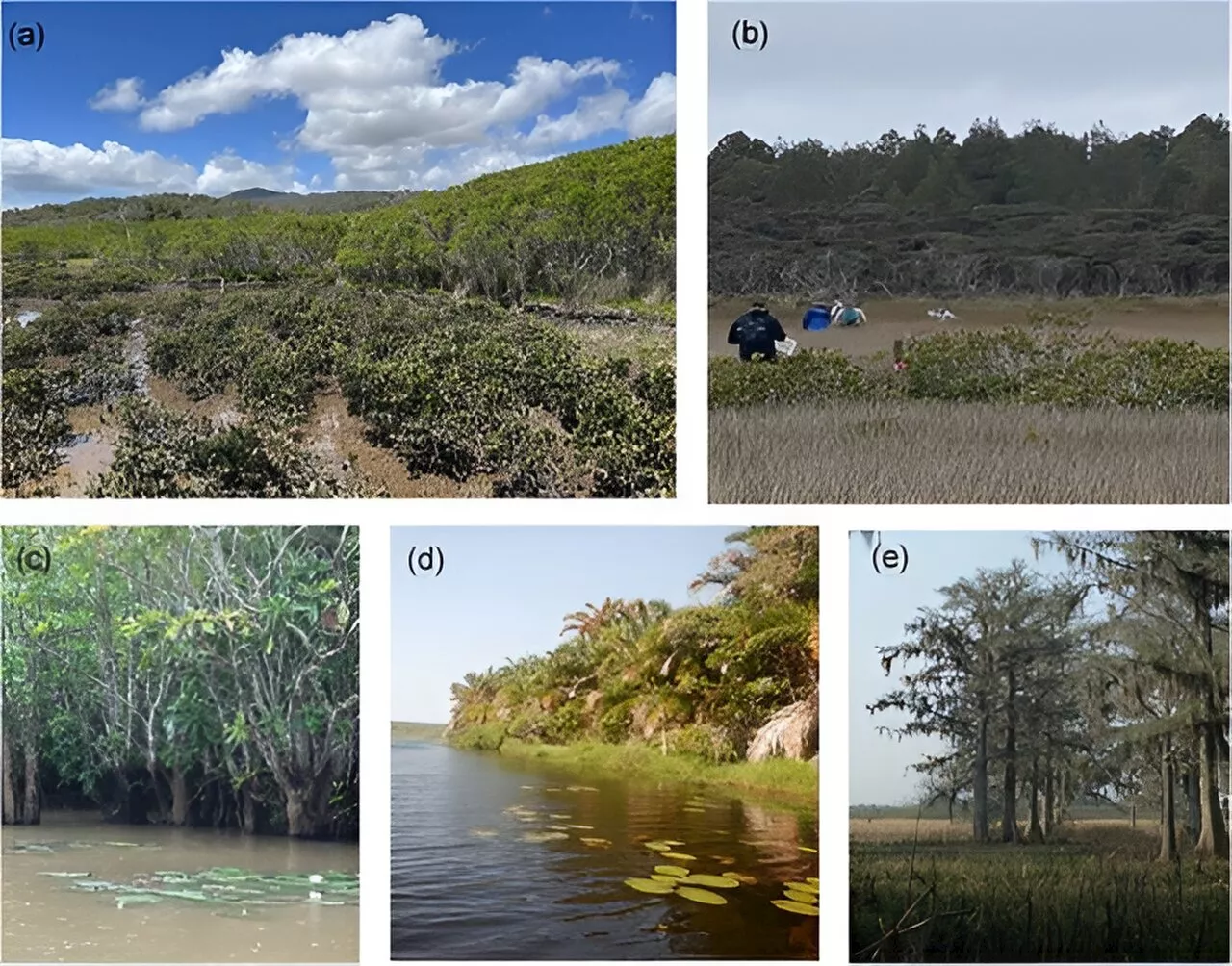Sorry, Tidal Basin: The National Arboretum’s sprawling collection of cherry trees offers the best and most colorful experience in the city.
Ben and Jenny Marron take photos with their children Caleb and Lucas beneath the cherry blossoms at the U.S. National Arboretum. Every year, the cherry trees around the Tidal Basin spring into brilliant bloom, creating an unforgettable scene — and drawing huge numbers of people who clog the paths around the monuments.
The advantages of spending an afternoon at the arboretum are apparent: Wide-open roads! Few cars! The ability to wander off the pavement and touch the grass between trees, and even spread out picnic blankets with views of flowering cherries and a pond in the distance! All this before we even get to the blossoms themselves.More than 70 varieties of cherry trees grow across the arboretum’s 446 acres, including three hybrids that were actually developed there.
Each stop is marked with a large pink placard. Look up that number in the brochure or on the app to find a photo of the blossoms and a biography of the plant: It’s interesting to learn that the Yoshino at Stop 29 is a clone of one of the trees that first lady Helen Taft originally planted at the Tidal Basin in 1912. On the other side of the arboretum, near the Administration Building, is a cultivar developed at the arboretum named after Taft, developed from a clone of an original Yoshino.
That connection to nature is what makes encountering cherry trees at the arboretum different from the Tidal Basin or Hains Point. Exploring is worthwhile: Da Silva, the interpretive specialist, hopes visitors do stray off the marked path, to places like a corner of the flowering tree collection at Crabtree and Hickey Hill roads ideal for a picnic. “The land rises away from the intersection,” da Silva says. “Not much, but just enough that I think a lot of people don’t bother to head up that way.
United Kingdom Latest News, United Kingdom Headlines
Similar News:You can also read news stories similar to this one that we have collected from other news sources.
 The Story of Stumpy: A Blossom-Lined Attraction at the Tidal BasinFans are flocking to see Stumpy, a tree stump with a branch of blooms, at the Tidal Basin. Stumpy's survival in a challenging environment has captured people's imaginations, especially during the pandemic.
The Story of Stumpy: A Blossom-Lined Attraction at the Tidal BasinFans are flocking to see Stumpy, a tree stump with a branch of blooms, at the Tidal Basin. Stumpy's survival in a challenging environment has captured people's imaginations, especially during the pandemic.
Read more »
 Love at first light: Cherry blossom devotees hit Tidal Basin at dawnLocals and visitors alike head to the Tidal Basin as early as 4 a.m. to avoid crowds and capture the cherry blossoms at sunrise.
Love at first light: Cherry blossom devotees hit Tidal Basin at dawnLocals and visitors alike head to the Tidal Basin as early as 4 a.m. to avoid crowds and capture the cherry blossoms at sunrise.
Read more »
 An unscientific guide to cherry blossom souvenirs near the Tidal BasinFrom cool to cringe and useful to useless, here’s an unscientific guide to D.C. cherry blossom merch and souvenirs found in gift shops near the Tidal Basin.
An unscientific guide to cherry blossom souvenirs near the Tidal BasinFrom cool to cringe and useful to useless, here’s an unscientific guide to D.C. cherry blossom merch and souvenirs found in gift shops near the Tidal Basin.
Read more »
 Washington, D.C. to Lose Over 100 Cherry Trees in Tidal Basin RestorationWashington, D.C. is set to remove over 100 iconic cherry trees, including one known as 'Stumpy,' as part of a long overdue restoration project for the Tidal Basin. The deteriorated seawall will be replaced to prevent flooding and protect the cherry trees' roots. The renovation project will take three years and cost $113 million.
Washington, D.C. to Lose Over 100 Cherry Trees in Tidal Basin RestorationWashington, D.C. is set to remove over 100 iconic cherry trees, including one known as 'Stumpy,' as part of a long overdue restoration project for the Tidal Basin. The deteriorated seawall will be replaced to prevent flooding and protect the cherry trees' roots. The renovation project will take three years and cost $113 million.
Read more »
 Alternative tidal wetlands in plain sight have overlooked Blue Carbon superstarsBlue Carbon projects are expanding globally; however, demand for credits outweighs the available credits for purchase.
Alternative tidal wetlands in plain sight have overlooked Blue Carbon superstarsBlue Carbon projects are expanding globally; however, demand for credits outweighs the available credits for purchase.
Read more »
 Magnificent Tidal Energy Project To Double As New City ParkTidal energy projects can compete on scale and cost with nuclear energy while creating urban parks and flood control opportunities, too.
Magnificent Tidal Energy Project To Double As New City ParkTidal energy projects can compete on scale and cost with nuclear energy while creating urban parks and flood control opportunities, too.
Read more »
